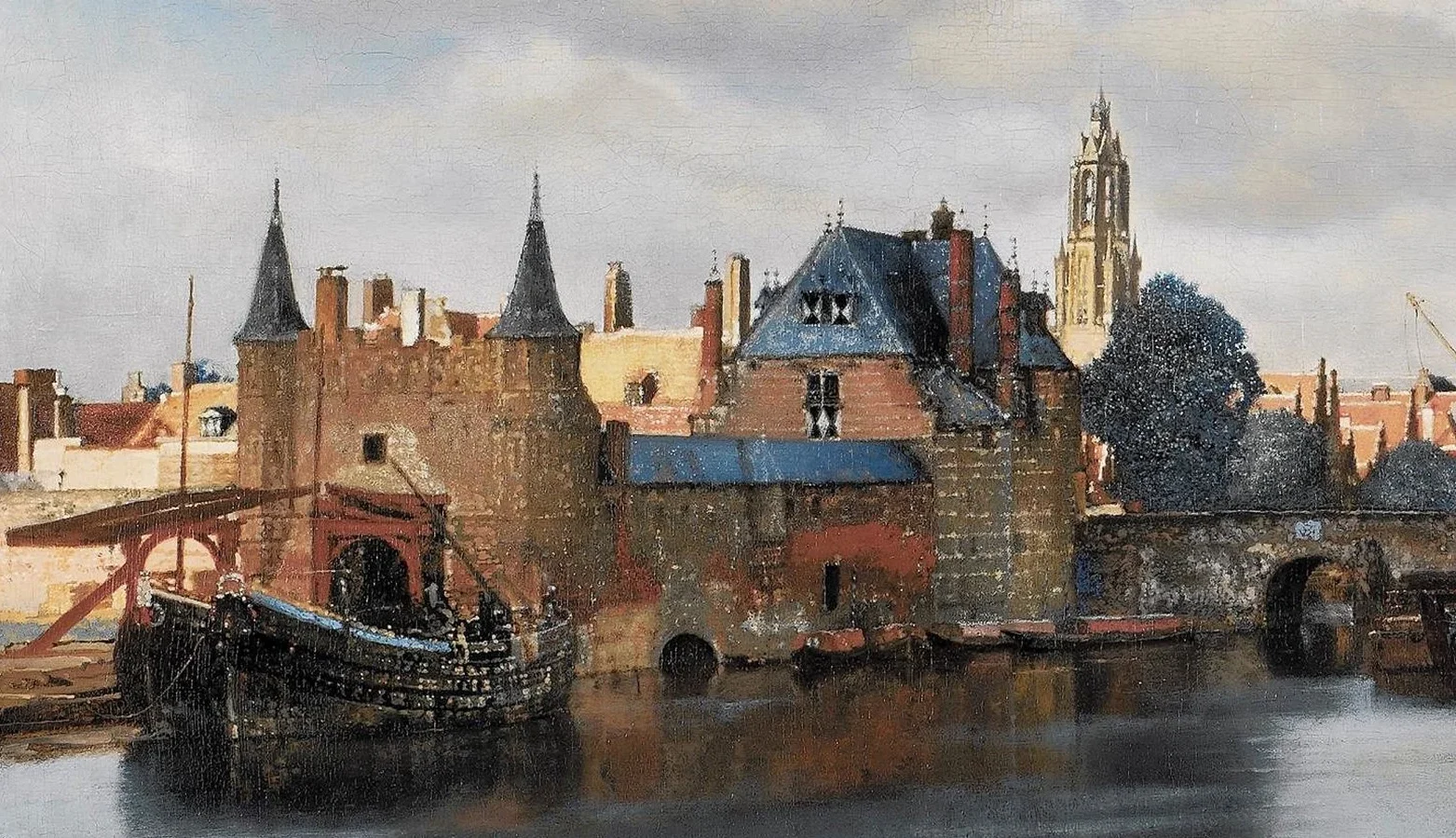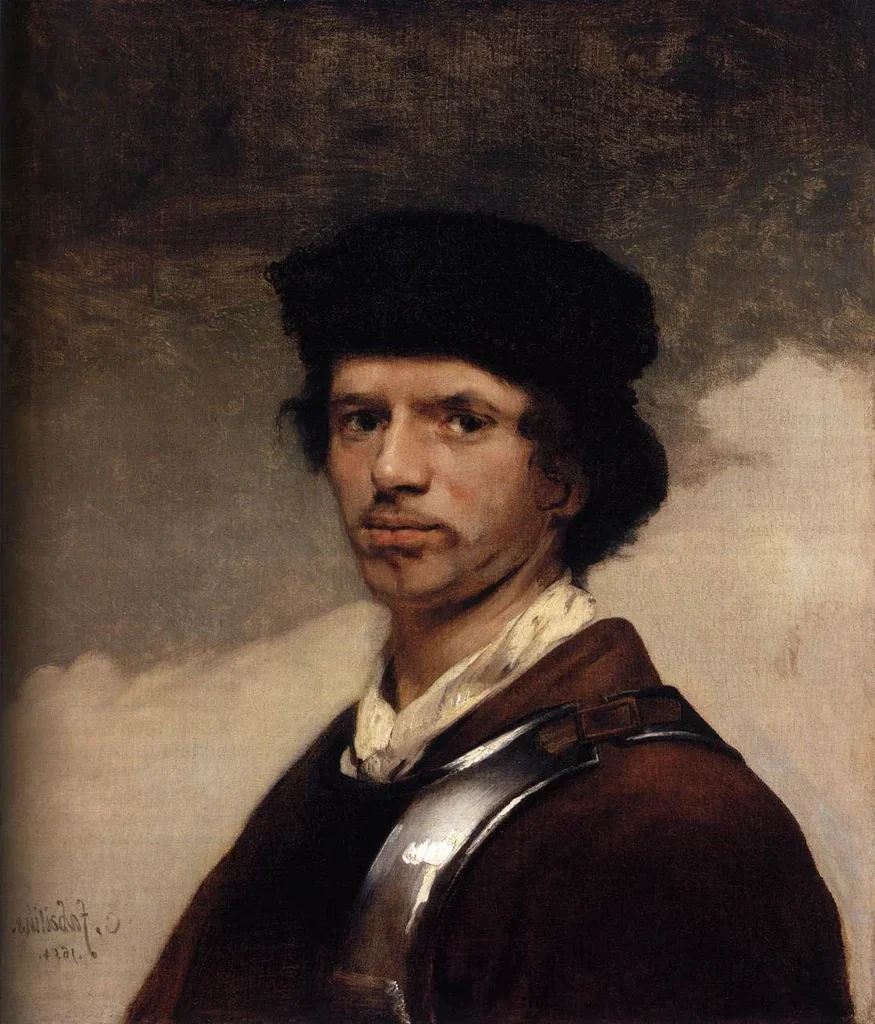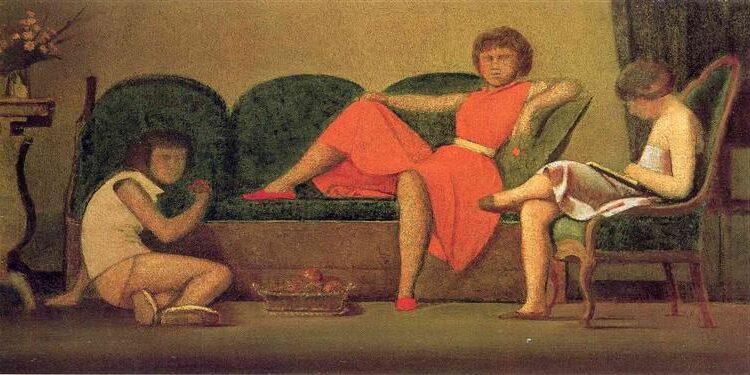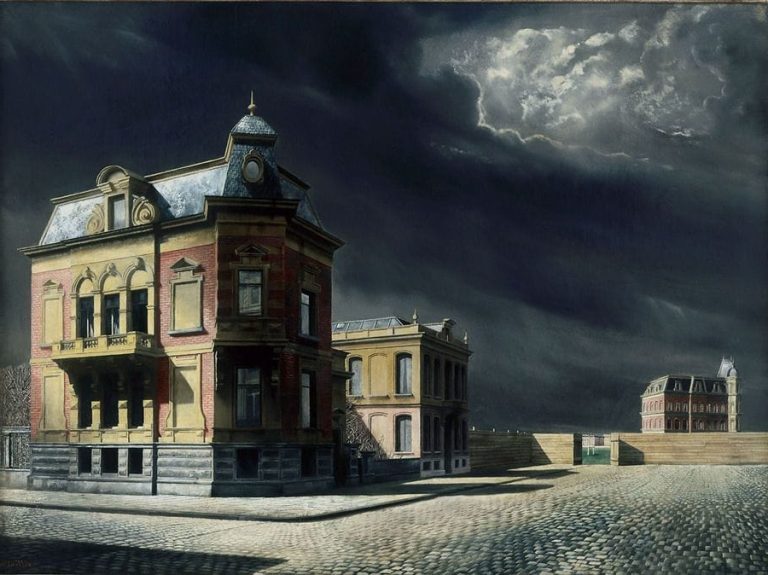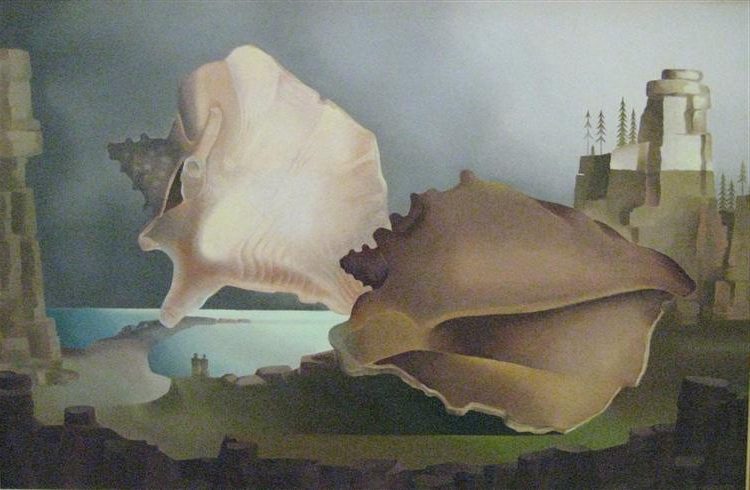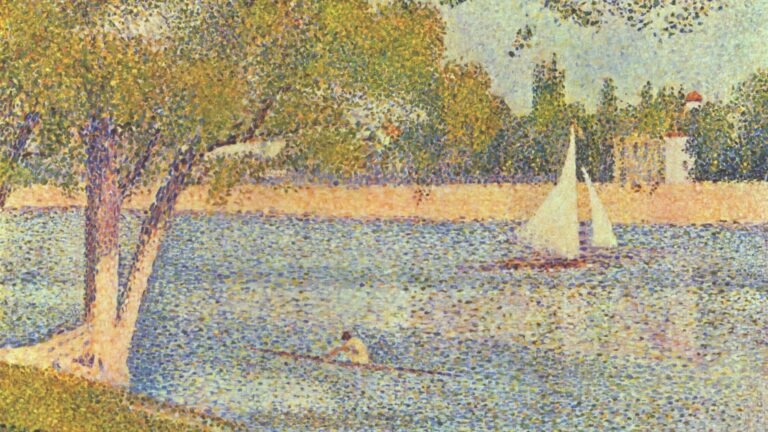Johannes Vermeer Painter: The Master of Light and Perspective in Dutch Golden Age Art
Born: 31 October 1632, County of Holland, Dutch Republic
Death: 15 December 1675, County of Holland, Dutch Republic
Art Movement: Dutch Golden Age, Baroque
Nationality: Dutch
Teacher: Carel Fabritius
Johannes Vermeer Painter: The Master of Light and Perspective in Dutch Golden Age Art
Life and Background of Johannes Vermeer
Johannes Vermeer lived a relatively short life in Delft during the Dutch Golden Age. His personal circumstances, religious choices, and financial difficulties all shaped his artistic development and legacy.
Early Years and Artistic Training
Johannes Vermeer was born in Delft in 1632, during the height of the Dutch Golden Age. His father, Reynier Vermeer, worked as an innkeeper and art dealer. This likely provided young Johannes with early exposure to paintings and artists.

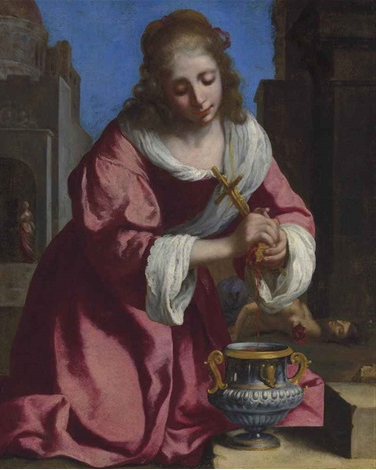
Little is known about Vermeer’s formal training. No documents exist confirming his apprenticeship with any master painter. Some art historians suggest he might have studied under Carel Fabritius in Delft or possibly received training in Utrecht.
By 1653, Vermeer had registered with the Guild of Saint Luke in Delft as a master painter. This official recognition allowed him to sell his paintings and take on apprentices, marking the beginning of his professional career.
Personal Life in Delft
Vermeer married Catharina Bolnes in 1653, a significant decision as she came from a Catholic family while Delft was predominantly Protestant. He converted to Catholicism for the marriage, which influenced both his social connections and possibly his art.
The couple lived in Delft their entire lives, primarily in a house owned by Catharina’s mother. They had 15 children together, with 11 surviving to adulthood.
Vermeer’s household was busy and crowded. Despite this, he maintained a disciplined painting practice, producing only about two paintings per year. This slow, meticulous approach characterizes his small but remarkable body of work.
Financial Struggles and Later Years
Despite his artistic talent, Vermeer faced ongoing financial difficulties. He supplemented his income by working as an art dealer like his father. However, this additional work was not enough to support his large family.
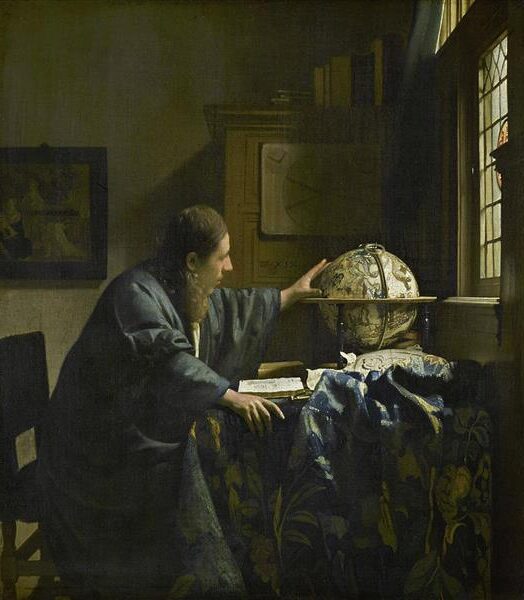
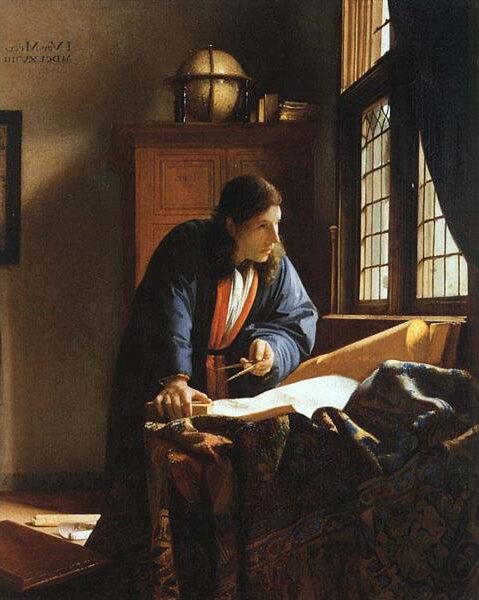
The Franco-Dutch War (1672-1674) devastated the Dutch economy and art market. Vermeer fell deeply into debt during this period as wealthy patrons had less money to spend on art.
When Vermeer died unexpectedly in 1675 at age 43, he left his wife and children with substantial debts. Catharina was forced to declare bankruptcy and surrender many of his paintings to creditors. This financial hardship partly explains why so few of Vermeer’s works—only about 35 paintings—are known to exist today.
Vermeer’s Artistic Style and Techniques
Johannes Vermeer developed distinctive techniques that made his paintings stand out among Dutch masters. His approach to light, composition, and detail created works of extraordinary realism and emotional depth.
Mastery of Light and Shadow
Vermeer’s command of light is perhaps his most celebrated skill. He captured natural light with remarkable precision, creating scenes that feel genuinely illuminated rather than merely painted. His paintings often feature light streaming through windows from the left side, casting soft highlights and shadows across interiors.
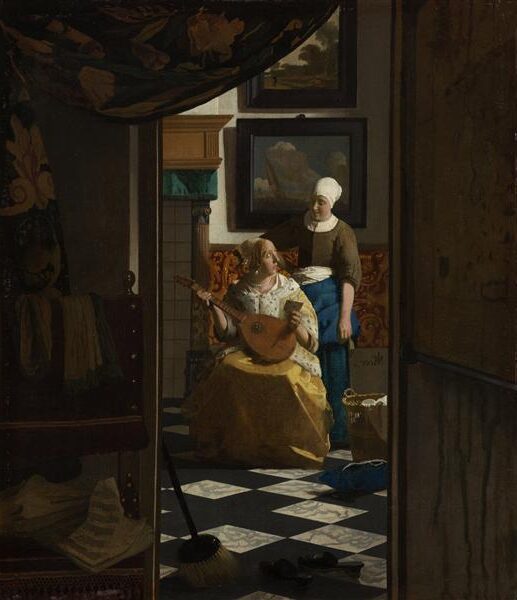
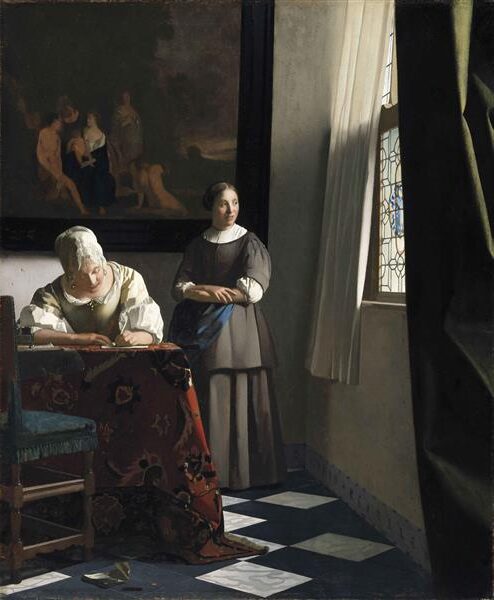
Vermeer used expensive pigments like ultramarine blue and lead-tin yellow to achieve luminous effects. He applied paint in thin, translucent layers called glazes to create depth and luminosity.
The artist’s treatment of light on different surfaces—fabric, metal, skin—shows incredible technical skill. In works like “Girl with a Pearl Earring,” he painted subtle highlights that make objects appear three-dimensional and lifelike.
Composition and Use of Perspective
Vermeer arranged his compositions with mathematical precision. He placed subjects in carefully balanced settings, often using doorways, maps, and furniture to create visual depth.
His paintings typically feature intimate indoor scenes with one or two figures engaged in ordinary activities. These seemingly simple compositions reveal complex spatial relationships and perfect balance.
Vermeer demonstrated exceptional skill with linear perspective, creating convincing three-dimensional spaces. He used checkered floor tiles and receding lines to establish depth.
His works contain thoughtful geometric arrangements. Objects are rarely placed randomly—each element contributes to the overall harmony and balance of the scene.
Influence of Camera Obscura
Evidence suggests Vermeer likely used a camera obscura, an early optical device that projects images onto a surface. This tool helped him observe light effects and perspective with unusual accuracy.
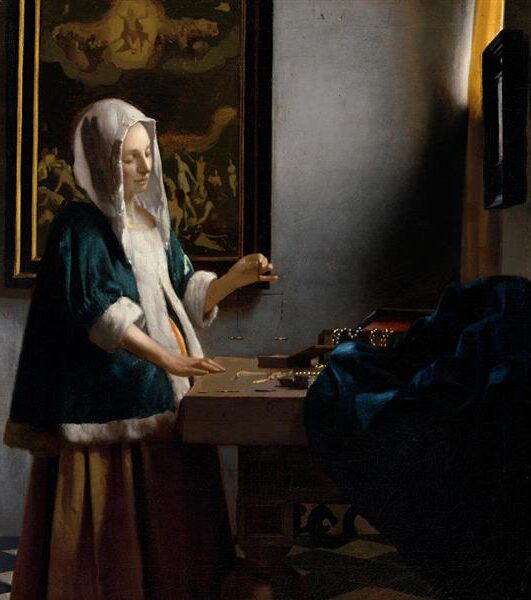
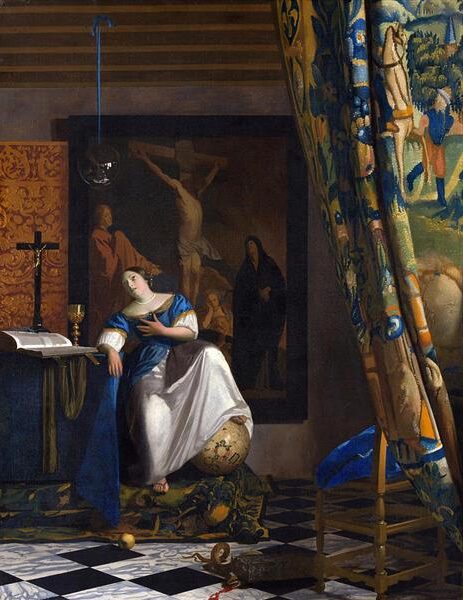
The camera obscura’s influence appears in Vermeer’s soft focus effects and distinctive highlights. Small circles of light, called “disks of confusion,” appear in many paintings—especially visible in reflective surfaces.
The device may explain Vermeer’s ability to capture complex light conditions that would be difficult to observe with the naked eye. It provided him with detailed visual information to create his meticulously realistic scenes.
Despite this technological assistance, Vermeer’s genius lies in how he transformed these observations into timeless art through his unique vision and exceptional skill.
Notable Works and Impact on Art
Johannes Vermeer created relatively few paintings during his lifetime—approximately 35 to 36 survived works from an estimated total of 60. Despite this small output, his mastery of light, color, and intimate domestic scenes secured his place as one of the most celebrated Dutch Golden Age painters.
Famous Paintings and Their Interpretations
Girl with a Pearl Earring (c. 1665) remains Vermeer’s most recognized work. This “Dutch Mona Lisa” features a young woman with an exotic turban and a large pearl earring, looking over her shoulder with a captivating gaze.
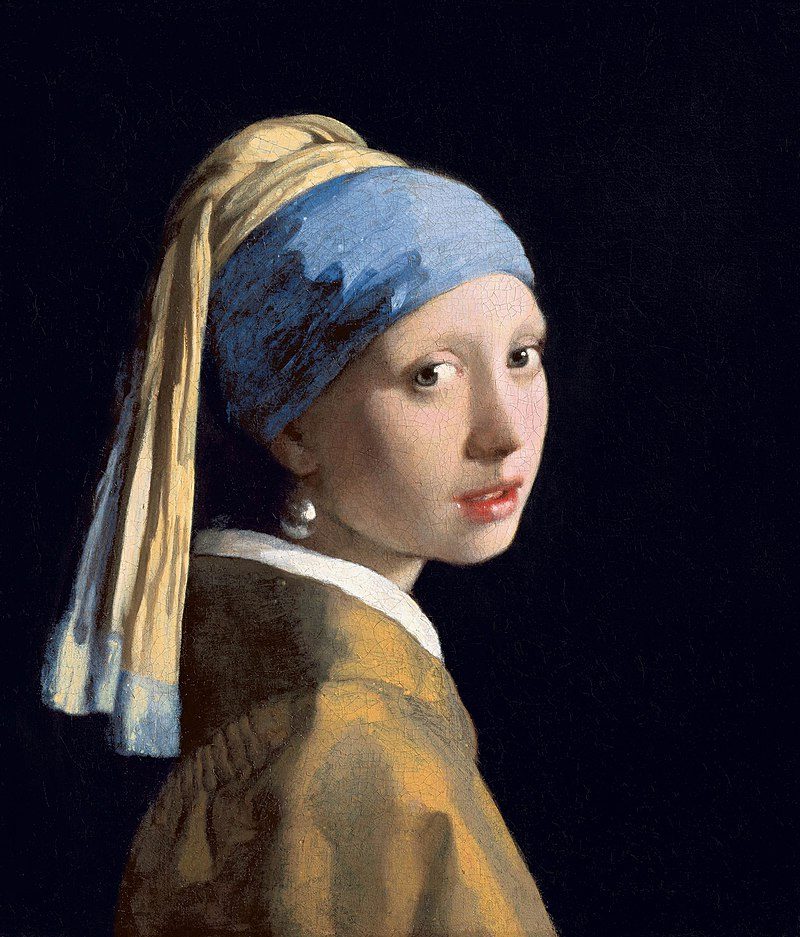

The Milkmaid showcases Vermeer’s masterful use of ultramarine blue, an incredibly expensive pigment at the time. The painting depicts a kitchen maid pouring milk, demonstrating his ability to elevate ordinary moments to extraordinary art.
View of Delft represents one of the few landscapes in his collection. Art historians praise its remarkable light effects and atmospheric quality.
The Art of Painting reveals Vermeer’s technical mastery and stands as a complex allegory about the relationship between artist and subject.
Vermeer’s Contribution to Genre Painting
Vermeer specialized in genre scenes—paintings of everyday domestic life—which gained immense popularity in 17th-century Holland. His works differed from contemporaries through his unique handling of light and meticulous attention to detail.
His paintings often feature women engaged in household activities or creative pursuits, such as A Lady Writing a Letter. These intimate scenes provide a window into Dutch middle-class life during the Golden Age.
Unlike many history painters of his era, Vermeer found profound meaning in ordinary moments. His composition techniques created a sense of suspended time, inviting viewers to contemplate these quiet scenes.
Art historians like Arthur K. Wheelock Jr. and Walter Liedtke have noted how Vermeer transformed genre painting by bringing psychological depth and emotional resonance to commonplace activities.
Legacy and Recognition in Modern Times
Vermeer fell into obscurity shortly after his death in 1675. His rediscovery began in the mid-19th century, and his reputation has grown steadily since.

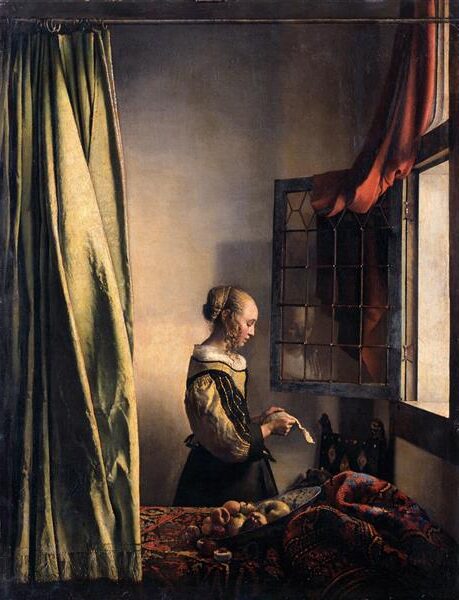
Today, his works hang in prestigious institutions like the National Gallery of Art in Washington and the Rijksmuseum in Amsterdam. Each Vermeer exhibition draws massive crowds, despite his small body of work.
The authenticity of some paintings, like Saint Praxedis, remains debated among scholars. This ongoing discussion reflects the intense interest in properly identifying his limited output.
Modern resources like the “Essential Vermeer” website have made his work accessible to global audiences. His paintings have inspired numerous books, films, and art reproductions, cementing his status as a cultural icon beyond the art world.
Frequently Asked Questions
Johannes Vermeer remains one of art history’s most intriguing figures despite having only 37 authenticated paintings. His distinctive style and technical mastery continue to captivate art lovers and prompt numerous questions about his life and work.
Which famous works is Johannes Vermeer known for?
Vermeer’s most celebrated painting is “Girl with a Pearl Earring,” often called the “Dutch Mona Lisa.” This iconic portrait features a young woman with an exotic turban and a large pearl earring.
“The Milkmaid” stands as another masterpiece, depicting a domestic servant pouring milk with extraordinary attention to light and texture. The painting showcases Vermeer’s skill in elevating everyday scenes to profound artistic statements.
“View of Delft” represents one of the few landscapes in Vermeer’s oeuvre. This cityscape of his hometown demonstrates his remarkable ability to capture light and atmosphere with precision.
“The Art of Painting” and “The Astronomer” reflect Vermeer’s interest in depicting intellectual pursuits. These works showcase his ability to create complex compositions with symbolic elements.
What are the characteristic techniques of Vermeer’s painting style?
Vermeer mastered the use of camera obscura effects, creating soft focus areas and precise light patterns. This technique helped him achieve the luminous quality his works are known for.
His signature use of ultramarine blue, made from expensive lapis lazuli, appears prominently in many paintings. This distinctive blue adds richness and depth to his compositions.
Vermeer employed pointillé, tiny dots of paint that create a sparkling effect when viewed from a distance. This technique is particularly visible in highlights on metallic objects and fabrics.
His paintings feature remarkably realistic textures, from polished marble to rough bread crusts. These textures contribute to the tangible sense of reality in his intimate scenes.
What is the historical significance of Vermeer’s contributions to the art world?
Vermeer exemplified the Dutch Golden Age’s focus on domestic scenes and everyday life. His work elevated genre painting to new artistic heights through exceptional technical skill.
As both an artist and art dealer, Vermeer influenced taste and artistic standards in Delft. The search results mention he was a “renowned art dealer and expert” in his time.
His innovative use of light and composition transformed how interior spaces could be depicted. Vermeer created a sense of psychological intimacy that was revolutionary for his era.
Despite producing relatively few paintings, Vermeer’s work represents some of the finest examples of Dutch Realism. His attention to detail and quality over quantity established new standards for artistic excellence.
How did Johannes Vermeer influence other artists during and after his lifetime?
During his lifetime, Vermeer’s influence remained relatively limited to the Delft artistic community. His small output and localized career restricted his broader impact during the 17th century.
In the 19th century, French art critic Théophile Thoré-Bürger rediscovered Vermeer, sparking renewed interest. This rediscovery profoundly influenced Impressionist painters who admired his use of light and color.
American painter Edward Hopper drew inspiration from Vermeer’s quiet domestic scenes. Hopper’s depictions of solitary figures in interior spaces echo Vermeer’s contemplative compositions.
Contemporary photorealist painters continue to reference Vermeer’s techniques. His meticulous attention to light, perspective, and detail remains a touchstone for artists seeking to create realistic imagery.
What are some theories about the symbolism found in Vermeer’s artwork?
Scholars suggest Vermeer’s frequent inclusion of maps and globes symbolizes Dutch maritime power. These elements may represent the Netherlands’ global trade dominance during the 17th century.
Musical instruments in his paintings often symbolize harmony and domestic virtue. The presence of these instruments contributes to the moral undertones common in Dutch genre painting.
Women engaged in domestic activities frequently represent ideals of virtue and industry. These depictions reflect cultural values regarding proper feminine behavior in Dutch society.
Letters appearing in several paintings symbolize communication and connection. Some art historians interpret these letters as representing emotional or romantic correspondence.
How has Johannes Vermeer’s reputation in art history changed over time?
During his lifetime, Vermeer achieved moderate success locally but wasn’t widely known. The search results mention that he was nicknamed “The Sphinx of Delft” due to how little was known about his life.
After his death, Vermeer fell into obscurity for nearly two centuries. During this period, people sometimes attributed his work to other Dutch artists.
The 19th-century rediscovery dramatically elevated Vermeer’s status in art history. Critics and collectors began to recognize his exceptional quality and distinctive approach.
Today, Vermeer ranks among the most celebrated Dutch masters globally. Despite having only 37 confirmed paintings, his reputation has grown to equal that of Rembrandt and other prolific contemporaries.

